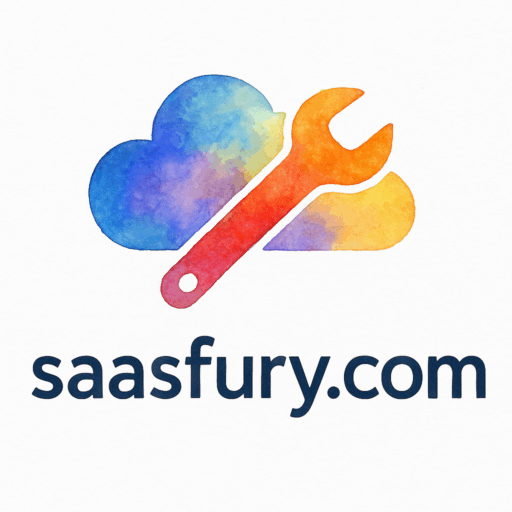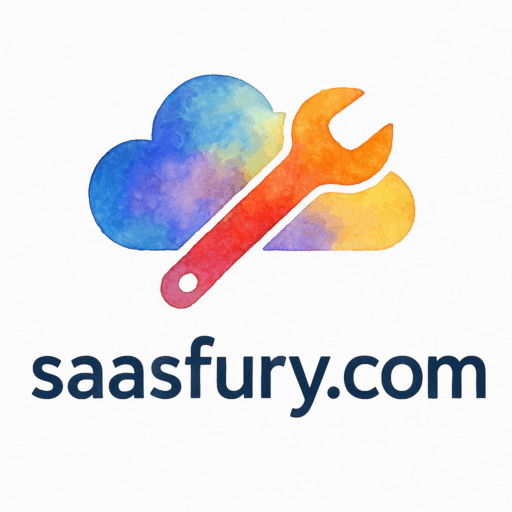Introduction
Being a graphic designer today isn’t just about creativity—it’s about using the right tools to bring your vision to life. That’s where SaaS (Software as a Service) platforms come in. They allow you to design, collaborate, and share without the limitations of old-school desktop-only software.
In this guide, we’ll dive into 7 SaaS tool recommendations for graphic designers that can help you stay ahead of the curve. Along the way, we’ll also highlight some business tools and resources from SaaS Fury that make creative work even more powerful.
Why Graphic Designers Need SaaS Tools
The Shift from Traditional Software to SaaS
Back in the day, installing design software meant hours of setup and costly licenses. Today, with SaaS tool recommendations, everything is cloud-based, faster, and collaborative.

Benefits of SaaS for Creative Professionals
SaaS isn’t just convenient—it’s transformative. Designers enjoy:
- Real-time team collaboration (like in online education platforms).
- Affordable subscription models that scale with your needs.
- Integrations with marketing agencies and project management apps.
- Stronger security and backup features compared to traditional software.
Key Features to Look for in SaaS Tools for Graphic Design
Cloud Storage & Collaboration
Just like in healthcare SaaS tools, data security and accessibility are critical. Graphic designers need instant collaboration without worrying about losing files.
Scalability & Pricing
Freelancers and agencies can pick SaaS plans that suit their budgets, similar to how retail SaaS solutions scale with business growth.
Integration with Other Tools
Design doesn’t happen in isolation. The best SaaS platforms integrate with consulting services, e-commerce, and scheduling tools to support end-to-end workflows.
Security & Data Protection
Much like patient record SaaS systems, creative work needs strong data protection. SaaS platforms typically include enterprise-grade security to safeguard your designs.
7 SaaS Tool Recommendations for Graphic Designers
Here’s a breakdown of the top SaaS tools every graphic designer should consider.
1. Adobe Creative Cloud
The powerhouse of design. Adobe CC provides Photoshop, Illustrator, After Effects, and more—all in one ecosystem.
- Best for: Professional graphic designers and creative agencies.
- Key benefit: Integration with stock assets, fonts, and seamless cloud syncing.
- Similar SaaS examples: Creative SaaS platforms.
2. Figma
Known as the “Google Docs of design,” Figma allows real-time collaboration with teams or clients.
- Best for: UI/UX designers.
- Key benefit: Plugins, design systems, and shared libraries.
- Related field: SaaS-driven language coaches also use similar collaboration platforms.
3. Canva Pro
Canva Pro makes it easy to whip up professional designs without advanced training.
- Best for: Social media graphics, branding, and marketing visuals.
- Key benefit: Thousands of templates and drag-and-drop ease.
- Related industry: Frequently used by small businesses and entrepreneurs.
4. Sketch
Sketch is streamlined for digital product design, especially for web and mobile.
- Best for: UI designers working with developers.
- Key benefit: Integrates seamlessly with prototyping tools.
- Related insight: SaaS integrations mirror how hospitality tools connect across industries.
5. InVision
Perfect for prototyping and presenting design ideas. Clients can comment directly on your prototypes.
- Best for: Agencies and collaborative design teams.
- Key benefit: Interactive design handoff for developers.
- Related link: Used heavily in professional services and consulting industries for visual communication.
6. Affinity Designer
A budget-friendly alternative to Adobe, offering both vector and raster tools.
- Best for: Freelancers who want powerful tools at a lower cost.
- Key benefit: One-time payment instead of subscriptions.
- Industry tie-in: Affinity’s model is similar to SaaS tools in retail and e-commerce—affordable yet scalable.
7. Dropbox Paper
Dropbox Paper is more than notes—it’s project management for creatives.
- Best for: Organizing feedback and collaboration beyond design.
- Key benefit: Keeps teams aligned in one shared workspace.
- Related link: Similar to SaaS tools in hospitality and food service, it bridges creative and business workflows.
Comparing the Top SaaS Tools for Graphic Designers
- Pricing: Adobe is premium, while Canva and Affinity are more budget-friendly.
- Collaboration: Figma and InVision dominate in teamwork.
- Flexibility: Sketch offers focused UI/UX design, while Adobe CC covers everything.
- Industry fit: Freelancers lean toward Canva and Affinity, while agencies rely on Adobe CC and InVision—similar to how omnichannel retail SaaS adapts for both startups and enterprises.
How to Choose the Right SaaS Tool for Your Workflow
- Evaluate Needs: Do you design mostly for branding, UI, or print?
- Test Free Trials: SaaS tools often offer free periods—use them wisely.
- Consider Budgets: Avoid overpaying for unused features, a lesson also echoed in business consulting SaaS.
The Future of SaaS in Graphic Design
- AI & Automation: Expect AI-generated templates and automated design flows. Similar AI trends are reshaping medical SaaS.
- Remote Collaboration: With SaaS, creative teams can collaborate globally—just as SaaS is transforming hotels and hospitality management.
Conclusion
The best SaaS tool recommendations for graphic designers aren’t one-size-fits-all. Adobe Creative Cloud remains the all-in-one powerhouse, Figma is unbeatable for collaboration, and Canva Pro is perfect for quick branding projects. Meanwhile, tools like Affinity Designer offer flexibility for budget-conscious freelancers.
The SaaS world is expanding across industries—from healthcare to retail—and graphic designers are at the center of this digital transformation. Try different tools, experiment, and find the perfect match for your workflow.
FAQs
1. What is the best SaaS tool for beginners?
Canva Pro is beginner-friendly thanks to its templates and drag-and-drop editor.
2. Which SaaS tool is best for UI/UX design?
Figma is the top pick for interface design, just like SaaS tools tailored for e-commerce teams.
3. Can SaaS tools be used offline?
Some, like Adobe CC, allow limited offline use, but most require internet access.
4. Are SaaS tools expensive?
It varies—Adobe is pricier, while small business SaaS tools like Canva or Affinity are more affordable.
5. Do SaaS tools replace traditional apps?
Not entirely—they enhance workflows but many designers still use offline apps.
6. Can clients collaborate using SaaS tools?
Yes, platforms like InVision and Figma allow client feedback in real time, similar to how scheduling SaaS tools streamline business operations.
7. What’s next for SaaS in graphic design?
AI, automation, and deeper integration across industries, just like SaaS is transforming restaurants and hospitality.

